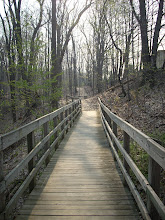Hooray! the new or used bike arrived, nicely packed in a big old bike box. Now what? How to put it back together?
I ship several bicycles a week around the USA and sometimes to Europe. Here are some of my personal opinions of how to put them back together when they arrive. Also, I've bought a lot of used bicycles on Ebay and have seen them arrive in all conditions. I have opened a bicycle box to find the bike with 3 sheets of wadded up newspaper as the only packing material, but I try to do a better job than that.
Open the top of the box. Longways. You can pull the bike out and lay it down. Cut the zip ties. Get the small box and any other parts out of the box. In the small box will be the pedals, maybe reflectors and the front wheel quick release skewer if your bike has one.
Pedals are easy to put on. If you have any grease, like for autos, you can put a little bit on the threads of the pedals. The pedals will say L and R, left and right ususally on the flat end of the threaded part. The left pedal is the one that your left foot will be on when you ride... if you are facing the left side of the bike the left pedal will thread backwards from regular threading - turn it counterclockwise and hand tighten it. You can use a wrench or channel locks when it is nearly on, but when you pedal you will continue to tighten it. Right side will turn clockwise.
If your bike has a front fender, it goes on before the front wheel, the tab on the fender goes just under the fork - there is a bolt just waiting for it.
The front wheel goes on the axle. If there is a skewer then the flipper side goes on the side left side of the bike.
The stem goes into the top of the headset. It will tighten with an allen wrench or a wrench, generally - line up the front wheel between your knees and square the stem. Then center and tighten up the handlebars. Sometimes the cables have made a crazy knot and you have to follow them but I try to keep them as untangled as possible.
The seat post can be lubricated with grease if you have it. This will help when you are riding in rain to keep water from hanging out inside the frame, and it will help you remove the seatpost when you need to. There is a line that will tell you if it is not in far enough. You can adjust the angle of the seat as well as how far forward or back the seat is, based on your own reach and what is comfortable.
Pedals, wheel, stem, bars, seat. If your bike has reflectors you can put them on now. I will generally leave notes about reflectors. If you have fenders the front one will go on before the front wheel. Rear racks are pretty much specific to each bike and often common sense helps.
Sunday, September 21, 2008
Subscribe to:
Posts (Atom)



